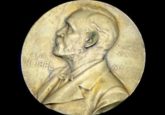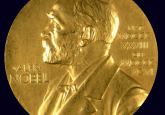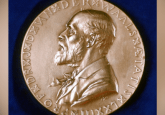Who won the 2021 Nobel Prize in Physiology or Medicine?

Touch has topped the biomedical research charts, delivering the 2021 Nobel Prize in Physiology or Medicine into the hands of the two researchers who identified the receptors for temperature and pressure.
Prior to the works of David Julius (University of California, San Francisco, CA, USA) and Ardem Patapoutian (Scripps Research, CA, USA) in the late 90s and early 2000s, our understanding of the mechanisms behind temperature and pressure perception were severely limited. The initiation of electrical impulses that relayed to the brain the searing pain of scalding water or the comforting weight of a duvet, was the key to unlocking the mechanisms responsible.
The spicy key to understanding thermal sensitivity
Setting out to identify the molecules responsible for the initiation of action potentials in response to heat, Julius selected a slightly abstract stimulus on which to base his studies. Instead of typical heat, he used capsaicin – the molecule in chili peppers responsible for bringing this particular Editor to sweats, desperately attempting to cool down with alternate doses of yogurt and milk. This reaction was well documented at the time as the activation of established sensory nerve cells by capsaicin, but the mechanism was not understood.
 The 2021 Ig Nobel Prizes: the lighter side of science
The 2021 Ig Nobel Prizes: the lighter side of science
Beards, flying rhinos, symptom-relieving orgasms, talking cats and colliding commuters: the 2021 Ig Nobel Prizes are here!
In the cornerstone study of his Nobel Prize-winning research, Julius isolated a library of DNA fragments containing genes exclusively expressed in nerves that respond to pain, heat and touch. His team then painstakingly introduced each fragment, separately into cells previously unresponsive to capsaicin. These cells were then tested to observe their reaction to the molecule.
Using this approach, the team eventually identified the gene TRPV1 as the key to enabling cells to respond to capsaicin. Subsequent analysis of the expressed ion channel protein’s response to heat revealed that it opened at temperatures that we deem painful. In separate follow-up experiments using menthol, both Julius and Patapoutian identified that the ion channel TRPM8 was responsive to cold.
The discovery of TRPV1 served as the catalyst that led to several ion channels being discovered that respond to a range of temperatures and ultimately revealed how we perceive changes in temperature.
Determining pressure perception poke by poke
In another institute in California at the time, Scripps Research, Patapoutian was exploring the mechanisms behind pressure perception and, by 2002 had identified a collection of cells that produced an electric signal in response to being prodded by a micropipette. Assuming that an ion channel was responsible for this signal, Patapoutian’s team identified 72 candidate genes that could potentially encode the target channel.
One after another, these genes were deactivated using RNAi knockdown until the cells no longer responded and the target gene was identified: Piezo1. A close relative, Piezo2, was quickly identified that served the same purpose, both acting as ‘stretch receptors’ with mechanical forces like pressure leading to a change in the conformation that opens the channel. Subsequent papers identified the protein Piezo2 as the primary channel responsible for the touch sensation and highlighted its role in the proprioception: the perception of movement and positioning, which requires receptors highly responsive to minuscule stimuli, such as the movement of hairs.
Further explorations of both these channels have revealed their essential roles in numerous mechanisms and have provided researchers with an avenue down which to pursue drug targets for conditions such as chronic pain. Highly valuable to disease and basic physiology research though these discoveries may be, and certainly worthy of the 2021 Nobel Prize in Physiology or Medicine, they have perhaps captured the imaginations of the public and researchers alike because they have explained how we experience that which makes life worthwhile. The gentle embrace of a loved one, the warm reassurance of a cup of coffee, the bracing refreshment of seawater on a hot day at the beach; all would be naught without TRPV1, TRPM8 and Piezo2.





